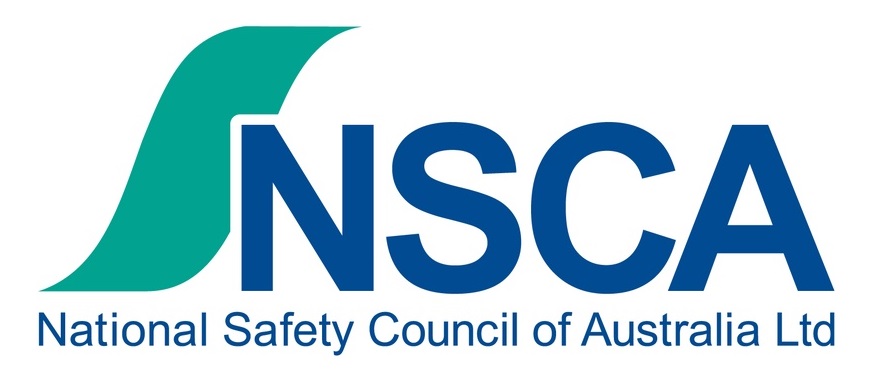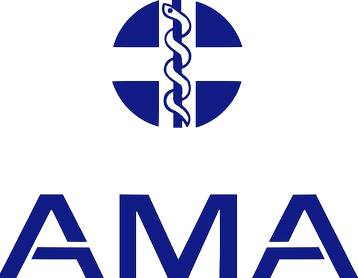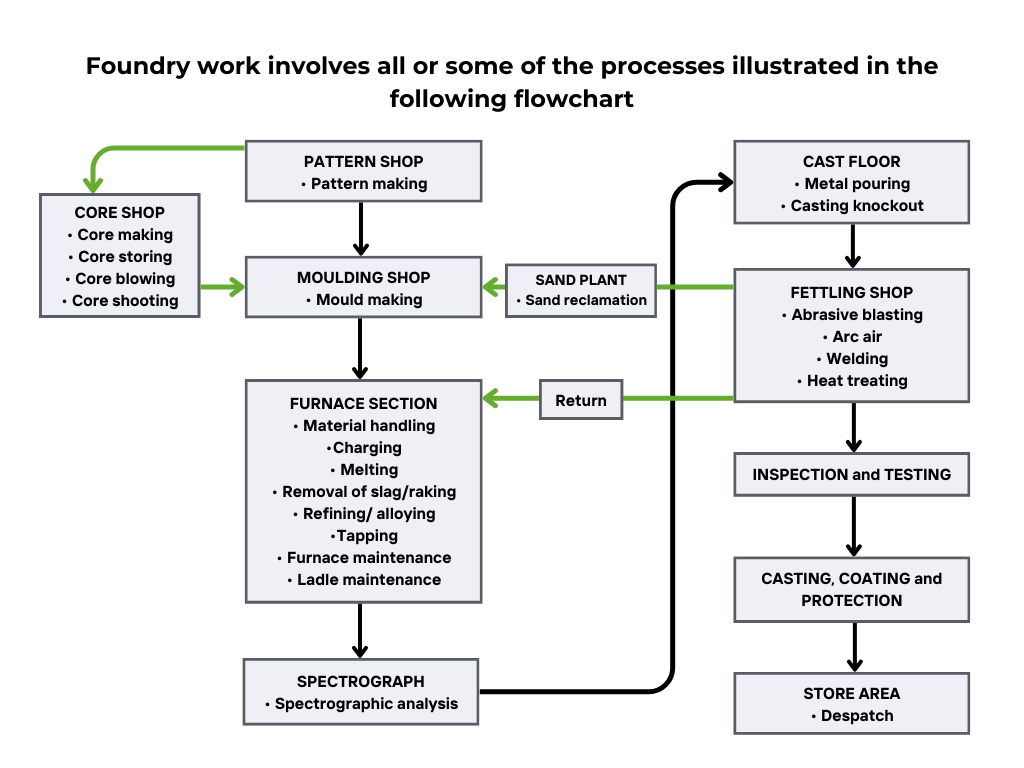Book in your Hazardous Substance Medicals today by contacting our medical reception nationally on 1300 880 804, simply CLICK HERE to get in touch with our team, or fill out the contact form at the bottom of this page, and we will assist you promptly.






SUBSTANCE | PROCESS/USE | HEALTH HAZARDS |
Acids | Used as amine neutralisers in effluent gas washers. Used as a catalyst in some sand binding systems. | Skin, eye and respiratory irritation. |
Acrolein | Decomposition product from core ovens. Emitted during pouring and shakeout where oil sand cores are used. | Eye, nose and throat irritation, lachrymation, pulmonary oedema. |
Aluminium oxide | Melting and pouring of aluminium alloys. Produced when aluminium is used as a de-oxidant for steel alloys. | Respiratory irritation. May possibly result in pulmonary fibrosis. Peripheral neuropathy and cognitive impairment from fume. |
Ammonia | Core-making decomposition product of nitrogen-containing binding materials. | Eyes and respiratory tract irritation which can be severe. High concentrations may result in chronic lung disease and eye damage. Skin contact can result in burns, blistering and permanent scarring. |
Antimony | Alloying element in brass foundry and for lead alloys. | Respiratory, skin and eye irritant. May cause dermatitis. Ingestion may cause severe irritation of lining of stomach and intestines. Inhalation may cause systemic poisoning with symptoms including abdominal pain, nausea, dizziness and dry throat. Chronic Exposure: liver and kidney abnormalities or pneumonitis may result from chronic antimony exposure |
Benzene | Solvent used in core-washing. | Long term exposure can damage the bone marrow and lead to leukaemia. A known human carcinogen (Carc 1A). Chronic exposures may result in convulsions and ventricular fibrillation. Acute exposures may result in central nervous system (CNS) depressions marked by dizziness, headache, nausea, loss of coordination, confusion. |
Beryllium | Used in a copper alloy, emitted during melting and pouring. | Presumed human carcinogen (Carc 1B) lung cancer. Skin sensitiser. |
Cadmium | Casting cadmium alloy products. | Presumed human carcinogen (Carc 1B), may cause kidney damage, suspected mutagen and human reproductive toxin. Acute exposures may cause nose and throat irritation. At high levels of exposure, after a delay of several hours a person may experience symptoms including a cough and chest pains, and death may result |
Carbon | Graphite | Respiratory and eye sensitisation |
Carbon dioxide | Emitted from core ovens, during melting and pouring processes and welding. | Asphyxiant, may contribute to oxygen deficiency if in excessive concentrations. |
Carbon monoxide | Emitted during melting and pouring processes, or processes involving pyrolysing carboniferous compounds. Decomposition product of core-making. | Chemical asphyxiant interferes with oxygen carrying capacity of blood which may lead to anoxia. This can give rise to headaches, irregular heartbeat, dizziness, drowsiness, nausea, vomiting, loss of co-ordination, loss of consciousness or death. |
Chlorine | Degassing agent used with non-ferrous alloys. | Severe eye, nose and throat irritation, pulmonary oedema and congestion. It can aggravate bronchitis or asthma. Acute exposures may cause asphyxia |
Chromium III | Welding, thermal cutting, grinding of castings. | Skin and eye sensitisation. Presumed human carcinogen (Carc 1B). |
Chromium VI | Melting, pouring and grinding of low alloy and stainless steel and chrome alloys. Welding. Chromate sand constituent. | Presumed human lung carcinogen (Carc 1B). Chromium (VI) trioxide is a known human carcinogen (Carc 1A). |
Cobalt | Melting, pouring, grinding. | Skin, eye, respiratory sensitisation, asthma, bronchitis, allergic dermatitis. Presumed human carcinogen (Carc 1B) lung. |
Copper (fume) | Melting, pouring and grinding copper alloys. | Acute respiratory irritation, metal fume fever. |
Cyclohexane | Used in the production of mould cores. | Acute inhalation can cause headache, nausea, dizziness, drowsiness and confusion. In very high concentrations, unconsciousness and death can result. |
Dimethylamine (DMEA) | Catalyst for cold-box binder systems. | Skin irritation, corneal oedema, ‘halovision’, contact dermatitis. |
Diphenylmethane diisocyanate (MDI) | Binder component used in urethane binders. | Eye, respiratory tract and skin irritation, bronchitis, nausea, vomiting, abdominal pain, occupational asthma. Suspected human carcinogen (Carc 2). |
Formaldehyde | Constituent of various resinous binders. Vapours emitted in moulding, pouring and shakeout areas from the decomposition of binder materials. | Strong irritant and sensitiser to skin causing tingling, drying and reddening of skin, eyes and respiratory tract, pulmonary oedema, bronchitis, contact dermatitis. Long term exposure through inhalation causes irritation of mucous membranes and the upper respiratory tract. Long term skin contact can cause allergy. A presumed human carcinogen (Carc 1B). |
Furfuryl alcohol | Added to urea-formaldehyde resins. Component in furan resin systems. | Lacrimation of eyes, bronchitis, allergic contact dermatitis. Suspected human carcinogen (Carc 2). |
Hydrogen chloride | Mist produced during the degassing and fluxing of non-ferrous metals. | Respiratory irritation, burns. |
Hydrogen cyanide | Decomposition product of nitrogen-containing binding agents. | Short term inhalation causes weakness, headache, dizziness, confusion, anxiety, nausea and death at high concentrations. Long term exposures cause a persistent runny nose weakness, giddiness, headache, nausea, abdominal pain, vomiting, throat irritation, changes in taste and smell, muscle cramps, weight loss, flushing of the face and enlargement of the thyroid gland. |
Hydrogen sulphide | Emitted during water quenching of slag. Decomposition product of some binders and catalysts during pouring. | Eye and respiratory irritation, nervous system changes, respiratory paralysis. |
Iron oxide (fume) | Melting, pouring and grinding of iron and steel. | Pulmonary irritation. |
Lead (fume) | Alloying agent for copper-based alloys. Emitted during melting, pouring and grinding lead, iron and steel. | Kidney, blood, gastrointestinal and nervous system changes. |
Magnesium oxide (fume) | Melting and pouring of ductile or nodular iron and magnesium. Corewash refractory. | Metal fume fever, for example fever, fatigue, aches, metallic taste in mouth. |
Manganese | Welding, arc air gouging of manganese steel castings. | Neurological disorders involving the central nervous systems including apathy, anorexia, sleepiness, leg weakness, mental excitement, uncontrolled laughter, speech disturbance, muscular rigidity or spastic gait. |
Methane | Emitted from ovens and furnaces and during pouring and shakeout. | Asphyxiant, unconsciousness and death. |
Methyl formate | Chemical bonding systems. | Inhalation may cause irritation to nasal passages and conjunctiva, optic neuritis, narcosis, retching and death from pulmonary irritation. |
Molybdenum sulphide/trioxide | Melting, pouring. | Suspected human carcinogen (Carc 2), eye and respiratory irritation. |
Nickel oxide | Melting, pouring and grinding nickel and stainless steel. | Dermatitis, skin sensitiser, known human carcinogen (Carc 1A), lung and nasal cancers. |
Nitrogen | Emitted from furnaces. | Oxygen deficiency, asphyxiant. |
Nitrogen dioxide | Produced in electric welding and arc air gouging. | Respiratory effects, lung oedema. |
Ozone | Produced in electric welding and arc air gouging. | Respiratory effects, lung oedema. |
Phenol |
Binder constituent. Decomposition product of binding system. |
Short term contact with skin, eye or mucous membranes leads to numbness or slight tingling, then burns, blisters, permanent skin damage and gangrene, damage to the mouth, throat and stomach, internal bleeding, vomiting, diarrhoea and decreased blood pressure. Shock, collapse, coma and death may result from acute serious exposures. A presumed human carcinogen (Carc 1B) – skin cancer. |
Phosphoric acid | Furan resin catalyst. | Eye, skin and respiratory tract irritation, dermatitis. |
Polycyclic aromatic hydrocarbons (PAH’s) | Produced in pyrolysis of organic compounds. Pouring decomposition product of sand moulds, furnace melting. | Associated with lung cancer, skin erthyema and sensitisation to ultra violet radiation. Benzo[a]pyrene, benzo[a]anthracene and dibenzo[a,h] anthracene. Presumed human carcinogens (Carc 1B). |
Silica (quartz) | Dusts emitted during moulding, core-making, shakeout, fettling and sand reclamation processes. Abrasive blasting of metal castings. Some mould release agents. Used in some furnace linings. | Chronic lung disease, silicosis. |
Sulphuric acid | Sulphuric acid used in production of furan resins for sand bonding. | Severely corrosive to skin, eyes and respiratory tract. Permanent scarring and blindness can result from serious exposures. Less serious exposures can result in difficulty in swallowing, intense thirst, coughing and shortness of breath. |
Sulphur dioxide | Catalyst for cold-box binder system. Emitted from furnaces and during magnesium casting. Breakdown product of toluene sulphonic acid or benzene sulphonic acid used as catalysts. | Eye and respiratory irritation, chronic bronchitis, asphyxia. |
Sulphur hexafluoride | Cover gas in magnesium casting. Pre-treating aluminium melt before casting. | Asphyxiant, may contribute to oxygen deficiency if in excessive concentrations. |
Toluene | Solvent used in corewashing. Mould decomposition product. Solvent in polyurethane resins. | Short term low level exposures can result in dermatitis, CNS depression, eye, skin and respiratory tract and mucous membrane irritation. |
Triethylamine | Catalyst used in coldbox binder system. | Irritation, oedema, chemical sensitisation. |
Wood dusts (hardwoods) | Pattern making. | Alteration to structure of mucous membrane linings. Known human carcinogen, nasal cancer, respiratory sensitisation and asthma. |
Wood dusts (softwoods) | Pattern making. | Potential human carcinogen, nasal cancer. Allergic reactions, skin sensitisation, occupational asthma. |
Xylene | Solvent used in corewashing. Mould decomposition product. | Irritation, CNS depression, liver and kidney damage, pulmonary oedema |
Zinc oxide (fume) | Melting, pouring and grinding or zinc, galvanised metal and brass. | Dermatitis, metal fume fever. |
Welcome to our exploration of foundry operations and the accompanying hazards. Foundries are vital for producing metal products, but they also pose significant risks to workers’ health and safety. In this section, we delve into the various processes within a foundry, starting with the pattern shop, core shop, moulding shop, and concluding with the furnace section.

The pattern shop is the heart of pattern making, assembly, and storage for moulding and core-making processes. Hazards in this area include:
The core shop focuses on processing and curing cores, involving core moulding, blowing/shooting, painting, and stoving. Hazards in this area include:
Mould making involves using a sand mixer and dispenser to create moulds. Hazards in this area include:
The furnace section encompasses various furnace types used for melting and refining metals. Hazards include:
It’s essential for workers in foundries to understand and mitigate these hazards through proper training, use of personal protective equipment, and adherence to safety protocols. Regular risk assessments and safety inspections are critical to maintaining a safe working environment in foundry operations.
A spectrograph is a vital tool used to analyse the chemical composition of small samples of molten metal for refining purposes. Hazards in this section include:
During pouring and cooling on the cast floor, hazards include:
Hazards during shakeout or knockout include:
The fettling shop involves the process of refining castings, with hazards including:
Understanding and mitigating these hazards are crucial for ensuring the safety and well-being of workers in foundry environments. Effective training, use of personal protective equipment, and adherence to safety protocols are essential for preventing accidents and maintaining a safe workplace.